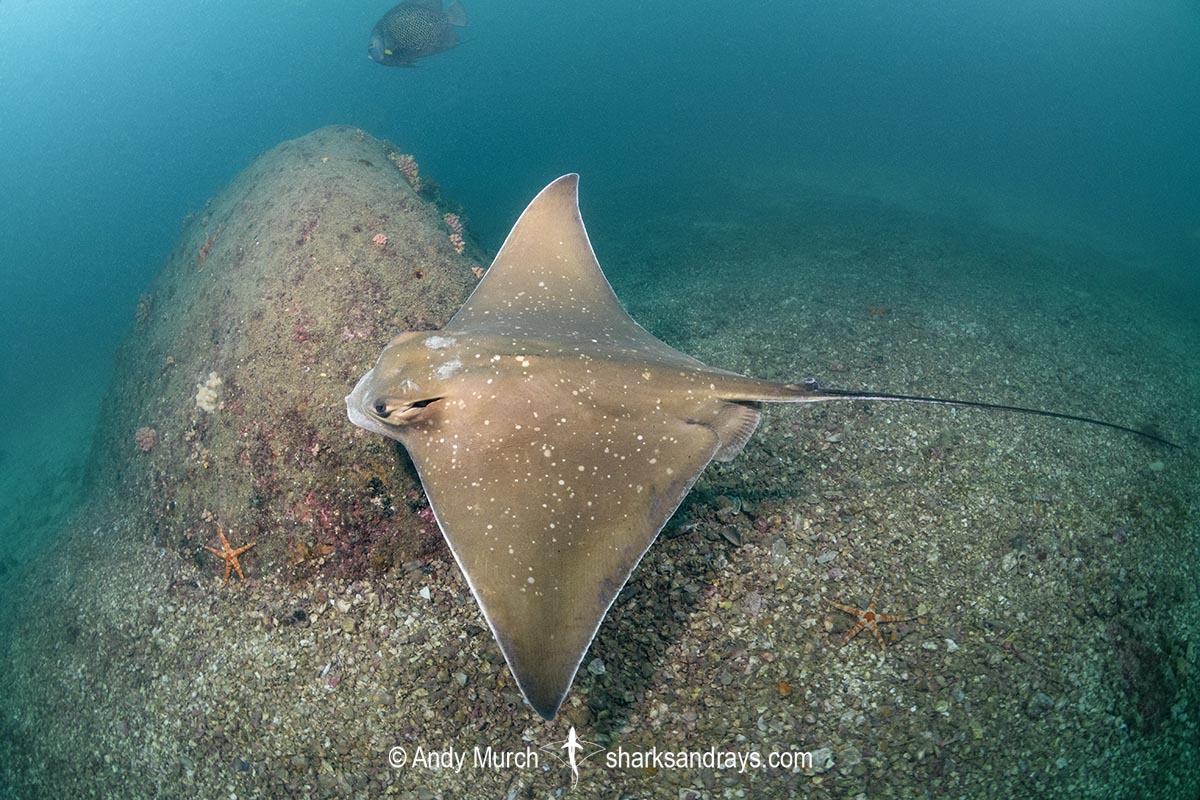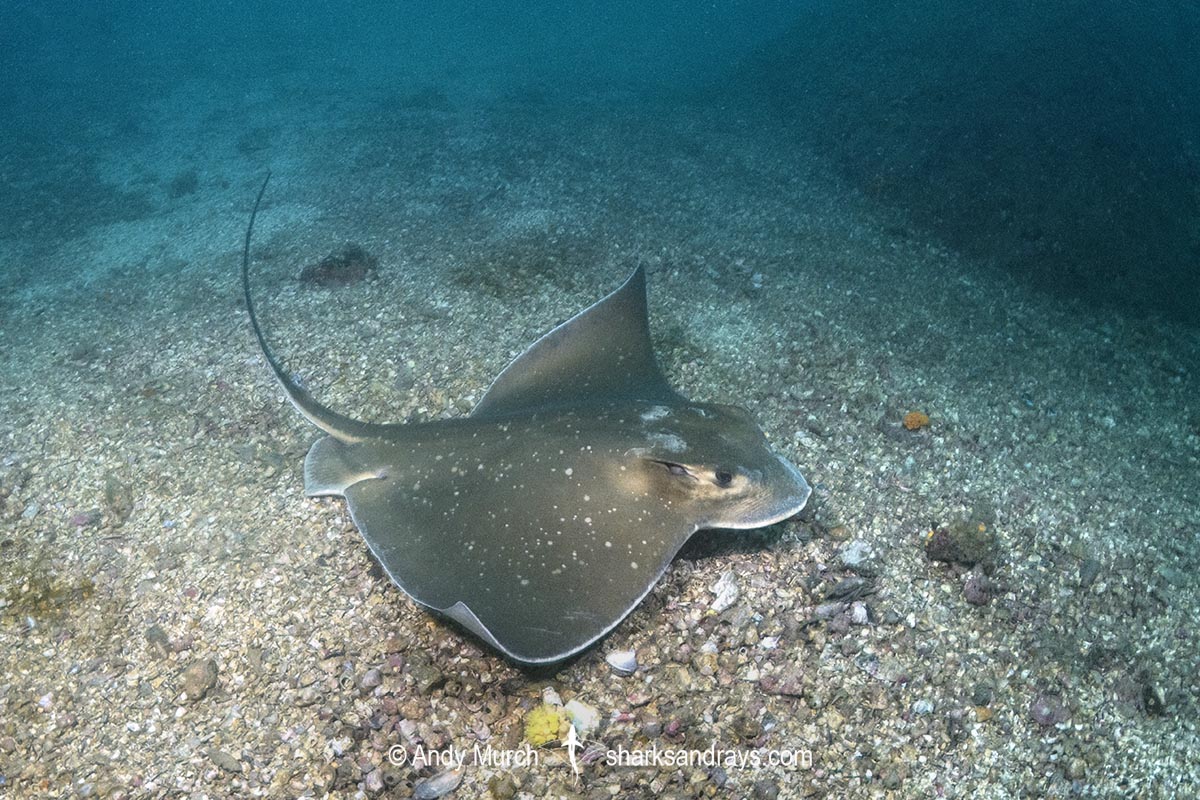Common name(s)
Bullnose Eagle Ray, Bullnose Ray.
Binomial
Myliobatis freminvillei
Synonyms
Myliobatis freminvillii
Identification
A medium-sized eagle ray with a very wide kite-shaped disc and large protruding head. Disc width 1.58-1.75 x length. Rostral lobe long, fleshy, and rounded with an obtusely angular tip. Rostral lobe connected to pectoral fins by a ridge below eyes. One small horn-like lobe above each eye in adult males. Spiracles large, positioned laterally, not visible from above. Nasal curtain short and wide with a long fringe along posterior margin, without deep central notch.
Head protruding well forward of pectoral fins. Pectoral fin origins posterior to eyes. Pectoral fin anterior and posterior margins, straight or mildly convex, curving more towards apices. Apices tightly rounded. Disc entirely smooth, lacking denticles or thorns except for a short row of midline denticles at nape in larger specimens. Pelvic fins long and relatively narrow, extending well beyond disc margin. One small dorsal fin with a broadly rounded apex and a short free rear tip, origin level with pelvic fin free rear tip. Tail long, tapering abruptly to caudal sting then filamentous to tip. Tail length 2.3-2-5 x disc length when intact. 1-2 large caudal stings usually present.
Colour
Dorsum redish-brown to greyish-brown, with small irregular scattered light spots. Ventrum white with dusky tips.
Size
Maximum disc width 106cm. Disc width at birth 25cm.

Conservation Status
VULNERABLE
In North America, the Bullnose Eagle Ray has few threats from fisheries. Notable increases in the population occurred between 2002–2013. However, in South America, significant declines continue to occur yearly, largely due to intensive, unmanaged artisanal and commercial fisheries that target and retain eagle rays.
Catch data indicates that this species has undergone a population reduction of >80% in the last 44 years in South America, with an overall species reduction of 30–49%.

Habitat
Tropical to temperate seas. Shallow sandy bays, estuaries, and soft substrates sometimes adjacent to coral reefs. Intertidal to at least 122m.
Distribution
Western Atlantic. In North America from Massachusetts to the Gulf of Mexico. In SOuth America from Venezuela to northern Argentina.
Reproduction
Matrotrophic viviparity. 6 pups per litter.
Diet
The bullnose eagle ray consumes a wide variety of invertebrates including gastropods, bivalves, and crustaceans.
Behavior
Migrates north/south into colder water during the summer.
Reaction to divers
Often shy around scuba divers unless preoccupied with feeding.
Diving logistics
In Brazil, Bullnose Eagle Rays are commonly encountered at offshore islands around Buzios during the colder months, from June-September, but they may also be encountered less frequently at other times.
At dive sites to the south e.g Laje de Santos, Bullnose Eagle Rays are also common.
What’s new
View our full list of updates
Similar species
Southern Eagle Ray Distinguished by less protruding head and lack of small spots.
